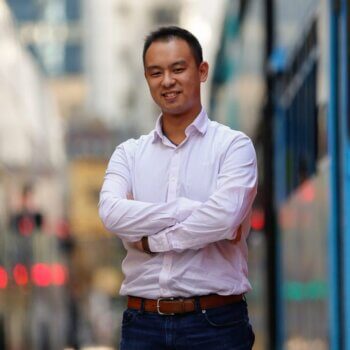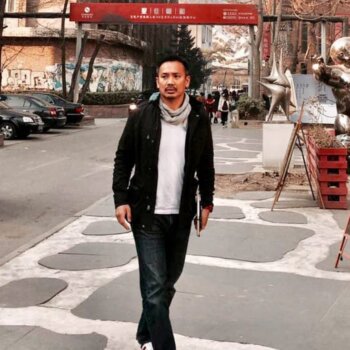As Asia’s economies rapidly expand, many eyes turn to the region’s emerging economies: Taiwan and Hong Kong, both nicknamed “Asian Tiger” economies, have shown tremendous progress in expanding their economies as well as the general infrastructure.
Taiwan
Situated conveniently near many of the major Asian ports and cities Taiwan acts as a center of trade and growth: the island nation has five international harbors and three international airports. Infrastructure in Taiwan is robust and stable, with a complex and comprehensive domestic transportation network that includes MRT networks in both Taipei and Kaohsiung, high-speed railways, highways, and trans-island railways. Availability of tap water and power has been above 90% since the early 2000s, and broadband penetration is sixth in the world. Roughly 80% of households have computers, and according to a study conducted in 2009, there are 111.0 mobile network subscriptions for every 100 people[1].
i-Taiwan Infrastructure Projects
Created in 2009 as an initiative for boosting economic growth in face of increasing global competition, the twelve i-Taiwan Infrastructure Projects are projected to induce spending of more than USD $133 billion. Government spending is estimated at $93 billion, while private investment covers $40 billion. The combined effects of these projects are anticipated to increase GDP by 2.95 percentage points per year, and create between 100,000 and 200,000 new jobs. The initiative boosted employment to an eight-year high of 10,696,000 by June of 2011,
Industrial Innovation Corridors
One prong of the twelve-point initiative that shows particular promise is the creation and improvement of industrial innovation corridors. The project targets six particular corridors: Taipei-Keelung-Yilan, Taoyuan-Hsinchu-Miaoli, Taichung-Changhua-Nantou, Yunlin-Chiayi-Tainan, Kaohsiung-Pingtung-Penghu, and Hualien-Taitung. Plans for each corridor include the construction of various new technology, science, industry, and R&D parks, etc., as well as the expansion of existing parks. The goal of the project is to attract international businesses and professionals, to create hubs for research, and to ultimately make Taiwan a center of technology, science, and industry.
The creation of such corridors will subsequently allow overseas companies to expand and further develop their bases in a region that is rapidly amassing power.
Taoyuan International Airport
Steps are also being taken to transform Taoyuan International Airport, Taiwan’s largest airport, into a 6,150-hectare aviation city. The project outlines firstly the enhancement of the existing airport through renovation of existing terminals and construction of two additional terminals. The airport is further projected to become a hub where global trade, transportation, and business intertwine to create a sustainable city, creating thousands of jobs and additional land for the growing population.
Investment in this project, a part of Taiwan’s i-12 Infrastructure Projects, will effectively promote the development of smart, sustainable cities worldwide; the success of this project will allow Taiwan to boost its rank in the world economy and further cement its position as a center of international trade and business.
Future Prospects
Taiwan’s government has, in recent years, heavily emphasized private investment, and has accordingly continued to propose a spew of infrastructure projects all aimed at boosting economic development domestically.
In correlation with its Act for Promotion of Private Participation in Infrastructure Projects enacted in 2001, the Ministry of Finance proposed in 2014 a USD $6.6 billion set of infrastructure development projects, including a $953 million urban renewal project in Nangang District, Taipei. The Ministry of Transportation and Communications also announced the proposal of a package of development projects in southern Taiwan estimated to cost around USD $4.2 billion, including a $1 billion project that will redesign and redevelop the Kaohsiung Station. Conferences have and will continue to be held by both ministries to encourage private investment: all Taiwanese and foreign private companies are invited to attend.
Private investment in such infrastructure projects will accelerate the domestic growth of the Taiwanese economy, many of which are beneficial to the growth and expansion of American businesses. Urban renewal projects in particular are aimed at allowing companies access to ideal establishment locations throughout Taiwan.
Hong Kong
In recent years, Hong Kong has shot to the top of the global economic sphere. Considered a Special Administrative Region (SAR) of the People’s Republic of China, Hong Kong is considered the third most important financial city in the world, and according to the International Monetary Fund, has one of the highest per capita incomes in the world. The nation’s dominance in the global spectrum is due heavily to its effective and strong infrastructure, which includes efficient transportation, and world-class communications and connectivity systems. Hong Kong International Airport has been dubbed the world’s best international airport for eight of the past fourteen years, and public transportation is convenient and affordable. Broadband and 3G networks offer service to nearly the entire territory, and the city’s deep-water port has allowed Hong Kong to emerge as one of the world’s largest and most important international sea and air cargo hubs.
Development of South Island Line
In Hong Kong’s Policy Address of 2007-08, ten major infrastructure projects were announced as a mechanism for further boosting economic development and creating additional job opportunities. One noteworthy project is the development of the South Island Line, which will create a rail line through the Southern and Western regions. Comprised of both West and East Sections, the project will cost roughly $7 billion and will allow for development of tourism in the southern regions, including locations such as Ocean Park and Aberdeen Waterfront. Additionally, the line will serve to further expedite the development of southern Hong Kong. The southern region has experienced slower growth in the past decades due to lacking transportation. Creation of the line, which began in 2011, will allow the expansion of southern Hong Kong, further expanding and boosting the economy of Hong Kong as a whole.
Hong Kong-Zhuhai-Macau Bridge
Proposed in 2007, the Hong Kong-Zhuhai-Macao Bridge is currently undergoing construction and is scheduled for completion in late 2016. Once completed, the bridge will be one of the longest bridges in the world and will link the three major cities surrounding the Pearl River — the Special Administrative Region (SAR) of Hong Kong, Zhuhai of the Guangdong Province, and the Macao SAR — to meet the growing transportation demands among the three regions. Traveling time between the three cities is predicted to lower dramatically, and will help aid tourism in the region. Establishment of the bridge requires a 6.7 kilometer tunnel, two artificial islands, and a complex system of drainage, traffic control, and surveillance.
The project, a joint effort by the governments of Hong Kong, Zhuhai and Macao, began construction on the Zhuhai and Macao sides in 2009. Construction in Hong Kong did not launch, however, until 2011 due to challenges posed by environmental groups. Such delays have caused the project’s cost to rise in recent years to an estimated USD $10.6 billion, and the cost will continue to grow as Hong Kong’s labor force struggles to complete the bridge by 2016.
written by Christine Lin of CalAsia. see more.





























